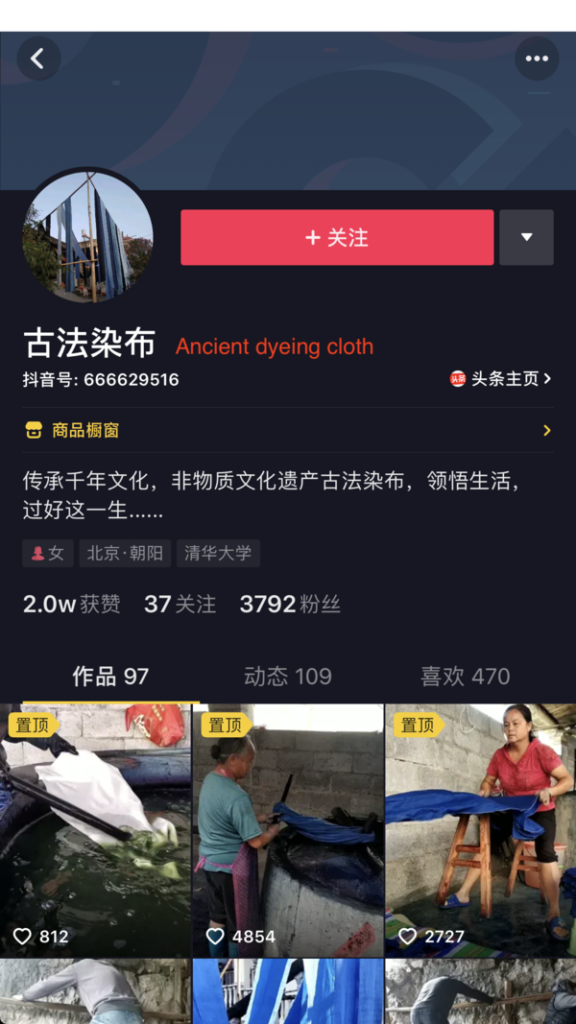
Xue Xia explores beyond the Great Internet Firewall of China to find surprising uses of TikTok for promoting crafts.
TikTok, a music creative short video social software that can shoot a short video. It was launched in September 2016 as a music community platform focusing on young people. As a Chinese social software, Tik Tok has developed rapidly in just a few years, releasing an international version and becoming a worldwide social software, favoured by users around the world, especially young people. Tik Tok was founded by Zhang Yiming and his partner Liang Rubo, who graduated from Nankai University in software engineering. Zhang Yiming has been involved in the establishment of Toutiao, Kuxun, 99 room and other internet companies.
Users of TikTok can choose songs through this software, shoot music short videos, and form their own works. Through the Tik Tok, users can share their lives, and at the same time, meet more friends and learn all kinds of anecdotes. Users can select songs, with short videos, to form their own works. Users can use video shooting speed, video editing, special effects (repeat, flash, slow motion) and other technologies to make the video more creative.
The background music is mainly electronic music and dance music. In the beginning, the video was divided into two groups: dance group and creative group. The common feature is that they all have a sense of rhythm. But now more and more people use Tik Tok, so video content is not only limited to dancing and music. Tik Tok is now one of the most popular mobile apps in China, integrating music, video, social networking, advertising, and online sales.
There are all kinds of handicrafts, also many special and interesting craftspersons on TikTok.
On the app, people will record the production process or introduce handicrafts. They can also sell products through TikTok. TikTok is now almost the most popular video software in China, so many craftsmen, especially those who are about to disappear, will release the video to promote their crafts. Because TikTok’s type is short video application, publishers will do something eye-catching in a short time. Viewers’ clicks, views or like can turn into revenue.
 Searching “handicraft”, “traditional handicraft”, “Chinese traditional cultural handicraft” can find numerous related users and topics. The number of streams related to “traditional handicraft” is 95.205 million, including 2,565 videos. The number of streams related to “handicraft” is 170 million, including 1,738 videos.
Searching “handicraft”, “traditional handicraft”, “Chinese traditional cultural handicraft” can find numerous related users and topics. The number of streams related to “traditional handicraft” is 95.205 million, including 2,565 videos. The number of streams related to “handicraft” is 170 million, including 1,738 videos.
Among these users, there are many representative craftsmen. Liziqi, who has 7.34 million followers on YouTube; on TikTok, she has 29.25 million followers.
The user, “Ancient dyeing cloth”, introduces the ancient dyeing cloth of the Bouyei nationality (living in Guizhou, China). They are all villagers from Zhenfeng, Guizhou province, who dye cloth for a living. It should be a family workshop, surnamed Luo. People may also have hired some employees. They use TikTok to advertise their cloth dyeing skills for profit. The customers are mainly from local markets. Also, on the website, people can go through TikTok’s sales window. Many also contact them through comments and messages, sending them their fabrics to dye.
TikTok is one of the most popular social software in China. Almost all young people use it. This type of video is very meaningful. It’s really great that so many craftspersons and organisations choose to advertise their craft on TikTok. They can pass on their handmade art to young people so that they can learn more about the forgotten and dying art. Because of China’s vast territory and abundant resources, there are so many different ethnic cultures. Through TikTok, it is meaningful to let more people know about the lifestyle of ethnic minorities. This can be very good protection for traditional handicrafts.
Though TikTok is a Chinese app, content on this platform from China cannot be accessed in other countries. Here’s something close from the non-Chinese version.


Comments
Good
Dd
Ehsbrjagcngja